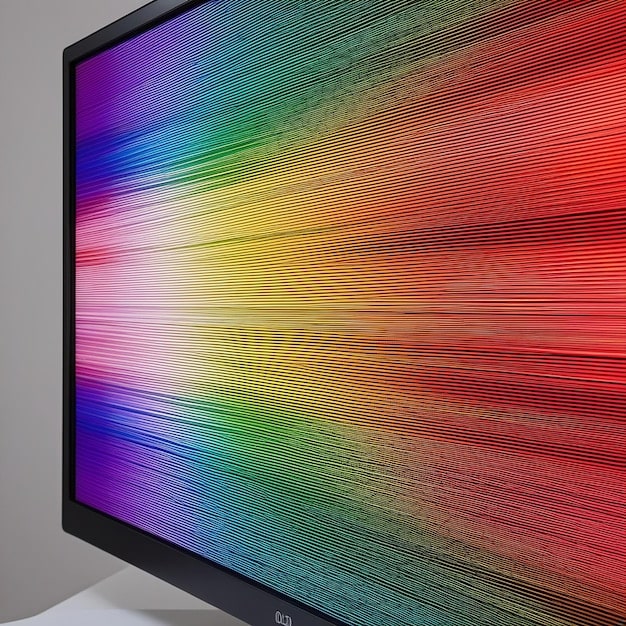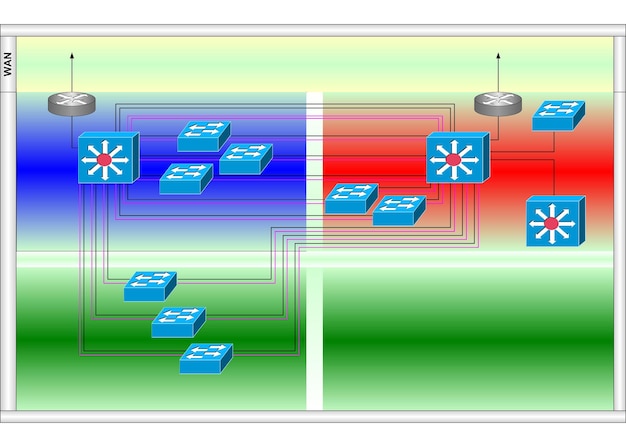Updated 2025: TV Stations Switching to ATSC 3.0 Standard

In 2025, numerous TV stations across the United States will transition to the ATSC 3.0 standard, also known as NextGen TV, promising enhanced picture quality, better sound, and interactive features for viewers.
Get ready for a major upgrade in your TV viewing experience! In 2025, many **TV stations switching to ATSC 3.0 Standard** across the US, bringing you NextGen TV with better picture and sound.
What is ATSC 3.0 and Why the Switch?
ATSC 3.0, also known as NextGen TV, represents the future of over-the-air broadcasting. It’s a new standard that promises a significant upgrade over the current ATSC 1.0 system, which has been in use for decades. But what exactly *is* ATSC 3.0, and why are so many stations making the switch?
The current ATSC 1.0 standard is limited in its capabilities. It supports only standard and high-definition video, and its audio capabilities are also relatively basic. In contrast, ATSC 3.0 offers a wide range of improvements, including:
- 4K Ultra HD resolution: Experience incredibly sharp and detailed images.
- High Dynamic Range (HDR): Enjoy a wider range of colors and greater contrast.
- Immersive audio: Get a more realistic and engaging sound experience.
- Interactive features: Access enhanced content and services, such as personalized news and weather updates.
- Improved mobile reception: Watch TV on your phone or tablet with a stronger and more stable signal.
The switch to ATSC 3.0 isn’t just about better picture and sound. It’s also about creating a more interactive and engaging TV experience. Broadcasters can use ATSC 3.0 to deliver targeted advertising, provide emergency alerts, and even offer educational content.
Ultimately, the transition to ATSC 3.0 is about keeping over-the-air broadcasting relevant in a world of streaming services and on-demand content. By offering a superior viewing experience and new interactive features, ATSC 3.0 can help broadcasters attract and retain viewers.
Key Benefits of Upgrading to ATSC 3.0
The upgrade to ATSC 3.0 brings a host of benefits for both viewers and broadcasters. Let’s dive into some of the most significant advantages of this next-generation technology.
For viewers, the most obvious benefit is the improved picture and sound quality. 4K Ultra HD resolution and HDR provide a stunning visual experience, while immersive audio makes you feel like you’re right in the middle of the action. But the benefits don’t stop there.
Enhanced Viewing Experience
ATSC 3.0 also offers a more personalized and interactive viewing experience. Broadcasters can use the standard to deliver targeted content, such as personalized news and weather updates. You can also access interactive features, such as polls, quizzes, and games.
Improved Mobile Reception
Another key benefit of ATSC 3.0 is improved mobile reception. The standard is designed to work better on mobile devices, so you can watch TV on your phone or tablet with a stronger and more stable signal. This is especially useful for people who are on the go or who live in areas with poor reception.
The advantages for broadcasters are also considerable. ATSC 3.0 allows them to:
- Generate new revenue streams through targeted advertising and interactive services.
- Improve their competitive position against streaming services.
- Deliver emergency alerts and other public service announcements more effectively.
- Offer educational content and other valuable services to their communities.
Overall, the upgrade to ATSC 3.0 is a win-win for everyone. Viewers get a better viewing experience, and broadcasters get new opportunities to generate revenue and serve their communities.

Which TV Stations Are Making the Switch in 2025?
So, which TV stations are planning to switch to ATSC 3.0 in 2025? While a comprehensive list is constantly evolving, here’s what we know so far.
Several major broadcasting groups have already committed to rolling out ATSC 3.0 across their stations. This includes companies like Sinclair Broadcast Group, Nexstar Media Group, and Tegna. These groups operate hundreds of stations across the country, so their commitment to ATSC 3.0 is a significant step forward.
It’s important to note that the rollout of ATSC 3.0 is happening on a market-by-market basis. This means that some cities will get NextGen TV before others. To find out if TV stations switching to ATSC 3.0 Standard in your area, you can check the websites of your local stations or visit the ATSC website.
Here are some key markets where stations are expected to transition to ATSC 3.0 in 2025 and beyond:
- New York City
- Los Angeles
- Chicago
- Philadelphia
- Dallas-Fort Worth
This is not an exhaustive list, and more stations are expected to join the transition in the coming months and years. The ATSC website provides details about the rollout. As the transition progresses, be prepared for a brighter, clearer, and more interactive TV experience.
The Technical Aspects of ATSC 3.0
Beyond the user experience, there are significant technical advancements that underpin ATSC 3.0. Understanding these aspects can help appreciate the standard’s potential.
ATSC 3.0 uses a different modulation scheme than ATSC 1.0. This means that ATSC 3.0 is more efficient and can transmit more data using the same amount of bandwidth. It also uses Internet Protocol (IP), which allows for greater flexibility and interactivity.
Improved Signal Strength
One of the key technical advantages of ATSC 3.0 is its ability to provide better signal strength, especially in challenging environments like dense urban areas or rural regions with limited infrastructure. This is crucial for viewers who have struggled with over-the-air reception.
Efficient Data Transmission
The implementation of IP-based transmission opens the door for hybrid broadcasting, which combines over-the-air signals with internet-delivered content. This can provide viewers with additional information, interactive features, and even personalized advertising.
ATSC 3.0 is also designed with scalability in mind. This means that broadcasters can gradually upgrade their equipment and services over time. They don’t have to replace everything at once, which makes the transition more affordable and manageable. Additionally:
- The standard supports a variety of video and audio codecs, so broadcasters can choose the ones that best suit their needs.
- It integrates advanced security features to protect against piracy and hacking.
- It facilitates targeted advertising, allowing broadcasters to deliver relevant ads to specific viewers.
These attributes make ATSC 3.0 a robust and future-proof technology. As it continues to roll out across the country, audiences can expect a more immersive and engaging TV experience.

What Equipment Do You Need for ATSC 3.0?
To enjoy NextGen TV, you’ll need compatible equipment. The transition isn’t as simple as flipping a switch—it requires a bit of preparation and the right hardware. So, what exactly do you need to get started?
First and foremost, you’ll need a TV that supports ATSC 3.0. These TVs are becoming increasingly common, but they’re not yet ubiquitous. When shopping for a new TV, look for the “NextGen TV” logo or check the specifications to make sure it supports ATSC 3.0.
ATSC 3.0-Enabled TVs
If you already have a TV that doesn’t support ATSC 3.0, you may be able to use an external tuner. These tuners connect to your TV and decode the ATSC 3.0 signal. However, keep in mind that external tuners can vary in quality and features, so it’s important to choose one carefully.
External Tuners
In addition to a compatible TV or tuner, you may also need a new antenna. ATSC 3.0 signals can be weaker than ATSC 1.0 signals, so you may need a more powerful antenna to receive them reliably. Here are some shopping tips for ATSC 3.0 equipment:
- Read reviews carefully before making a purchase.
- Compare prices from different retailers.
- Make sure the equipment is compatible with your TV and antenna.
- Consider the features that are most important to you, such as HDR or Dolby Atmos support.
With the right equipment, you can enjoy all the benefits of NextGen TV. Get ready for a whole new level of picture quality, sound, and interactivity.
The Future of Television Broadcasting with ATSC 3.0
As more and more TV stations make the switch to ATSC 3.0, the future of television broadcasting looks bright. This new standard has the potential to transform the way we watch TV, making it more immersive, interactive, and personalized.
One of the most exciting possibilities of ATSC 3.0 is the ability to deliver targeted advertising. This means that viewers will see ads that are relevant to their interests, rather than generic ads that are irrelevant. This will make advertising more effective for businesses, and it will also make TV viewing more enjoyable for viewers. The convergence of broadcasting and the internet is another transformative aspect.
Convergence with the Internet
ATSC 3.0 facilitates the integration of over-the-air broadcasting with internet-delivered content. This can facilitate content delivery, interactive features, and personalized advertising. It can also lead to the development of new and innovative services. Here’s what the future might entail:
- Emergency alerts that are more targeted and informative.
- Educational content that is tailored to individual learners.
- Interactive games and quizzes that are integrated with TV shows.
- Personalized news and weather updates that are delivered in real-time.
The switch to ATSC 3.0 isn’t just a technological upgrade—it’s a paradigm shift that positions over-the-air broadcasting for long-term sustainability. As the standard continues to evolve, it will undoubtedly bring even more exciting features and possibilities.
| Key Point | Brief Description |
|---|---|
| 📺 ATSC 3.0 | Next generation broadcast standard. |
| 🖼️ Enhanced Quality | Offers 4K, HDR, and better audio. |
| 📱 Mobile Reception | Improved TV viewing on phones. |
| 📡 Equipment Needed | Requires ATSC 3.0 TV or tuner. |
FAQ
▼
The primary advantage is significantly enhanced picture and sound quality, including 4K resolution and immersive audio experiences.
▼
No, unless it’s specifically an ATSC 3.0-enabled TV. However, you might be able to use an external tuner.
▼
No, the rollout is happening market by market. Check local broadcast websites for updates in your area.
▼
Yes, it’s designed to provide a stronger and more stable signal on mobile devices.
▼
Yes, ATSC 3.0 enables interactive elements like targeted ads and personalized news.
Conclusion
The transition of **TV stations switching to ATSC 3.0 Standard** in 2025 is poised to revolutionize the broadcasting landscape, offering viewers in the US superior picture and sound quality, enhanced mobile reception, and interactive features. While requiring new equipment, the upgrade promises a more immersive and personalized TV experience, marking a significant leap forward in television technology.





